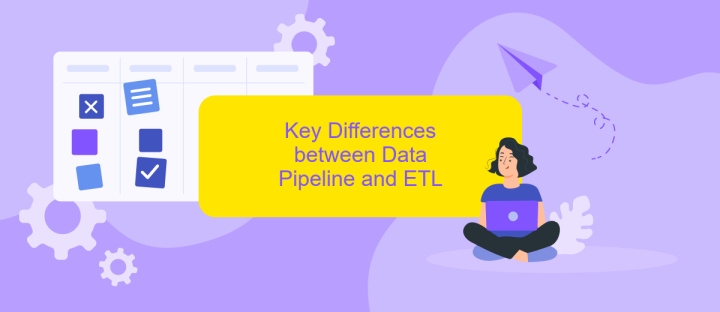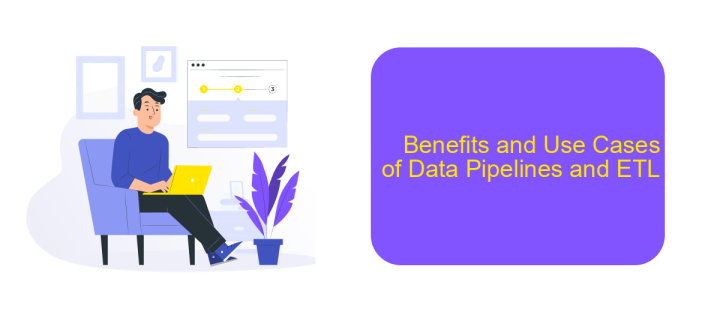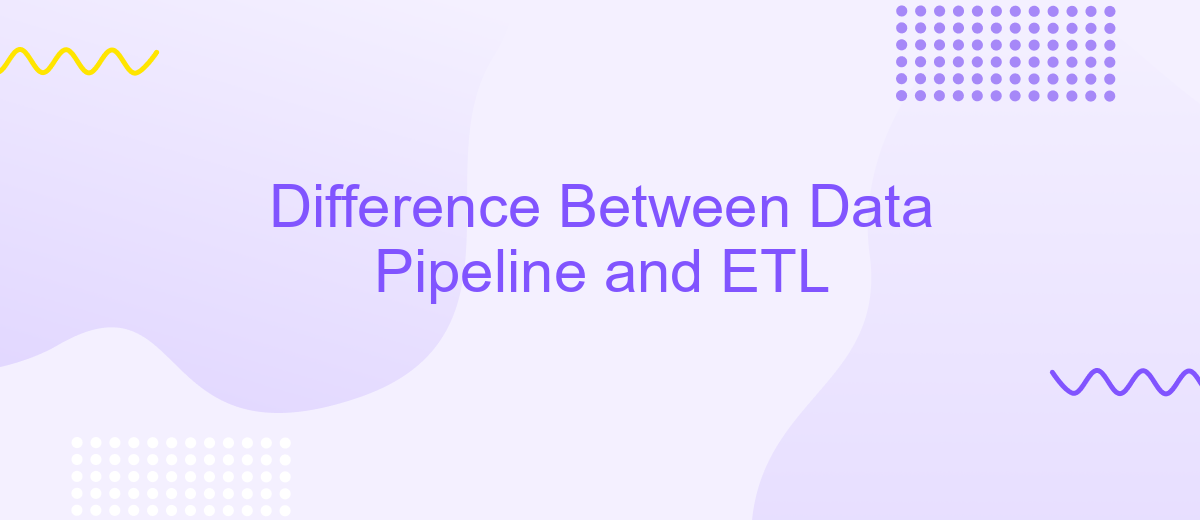Difference Between Data Pipeline and ETL
In the realm of data management, understanding the distinction between data pipelines and ETL (Extract, Transform, Load) processes is crucial. Both are integral to the movement and transformation of data, yet they serve different purposes and have unique characteristics. This article explores the key differences, helping you to choose the right approach for your data needs.
Introduction
In the world of data management, understanding the difference between a data pipeline and ETL (Extract, Transform, Load) processes is crucial for optimizing data workflows. Both concepts are fundamental for ensuring data is efficiently and accurately moved, processed, and stored, but they serve distinct purposes and are applied in different contexts.
- Data Pipeline: A sequence of data processing steps where data is ingested, processed, and stored, often in real-time.
- ETL Process: A specific type of data pipeline that involves extracting data from various sources, transforming it to fit operational needs, and loading it into a target database or data warehouse.
While a data pipeline can encompass a broader range of operations, ETL is typically more focused on the transformation and integration of data. Tools like ApiX-Drive can simplify these processes by automating data transfers and integrations between different systems, ensuring seamless and efficient data workflows. Understanding these differences can help organizations choose the right approach for their data management needs.
Data Pipeline vs ETL: Concepts and Definitions

Data pipelines and ETL (Extract, Transform, Load) processes are fundamental concepts in data engineering, yet they serve different purposes. A data pipeline is a series of automated processes that move data from one system to another, often in real-time. It encompasses a broader range of data operations beyond just extraction, transformation, and loading, including data validation, integration, and analytics. Data pipelines are designed to handle continuous data flow, making them ideal for real-time analytics and machine learning applications.
On the other hand, ETL specifically refers to the process of extracting data from various sources, transforming it into a suitable format, and loading it into a destination system, typically a data warehouse. ETL processes are often batch-oriented and are used for consolidating data from disparate sources for business intelligence and reporting. Services like ApiX-Drive can simplify the setup of both data pipelines and ETL processes by offering seamless integrations with multiple data sources, enabling automated data flow and transformation without extensive coding.
Key Differences between Data Pipeline and ETL

Data Pipeline and ETL are both integral parts of data management, but they serve different purposes and have distinct characteristics. Understanding these differences is crucial for businesses to choose the right approach for their data processing needs.
- Scope: Data Pipelines encompass a broader scope, handling data flow from source to destination, while ETL focuses specifically on extracting, transforming, and loading data.
- Flexibility: Data Pipelines offer more flexibility, enabling real-time data processing and integration with various tools like ApiX-Drive, which simplifies the setup of integrations. ETL processes are typically batch-oriented and less adaptable.
- Complexity: ETL processes can be complex due to the transformation logic required. Data Pipelines, on the other hand, can be simpler and more modular, allowing for easier maintenance and scalability.
- Use Cases: Data Pipelines are ideal for continuous data streaming and real-time analytics. ETL is better suited for periodic data warehousing and reporting tasks.
In summary, while both Data Pipelines and ETL are essential for data processing, their differences in scope, flexibility, complexity, and use cases make them suitable for different scenarios. Tools like ApiX-Drive can enhance the functionality of Data Pipelines by streamlining integrations and improving data flow efficiency.
Benefits and Use Cases of Data Pipelines and ETL

Data pipelines and ETL processes are essential for handling and transforming data efficiently. They offer several benefits that make them indispensable in modern data management and analytics. Data pipelines automate the flow of data from various sources to destinations, ensuring timely and accurate data delivery. ETL (Extract, Transform, Load) processes are crucial for preparing data for analysis by extracting it from source systems, transforming it into a suitable format, and loading it into a data warehouse or database.
Both data pipelines and ETL processes have distinct use cases that cater to different business needs. Data pipelines are ideal for real-time data processing and continuous data integration, making them suitable for applications that require up-to-date information. ETL processes, on the other hand, are best suited for batch processing and complex data transformations, which are essential for data warehousing and business intelligence.
- Real-time analytics and monitoring
- Data warehousing and business intelligence
- Data integration from multiple sources
- Automation of data workflows
For businesses looking to streamline their data integration processes, tools like ApiX-Drive can be highly beneficial. ApiX-Drive simplifies the setup of data pipelines and ETL processes by providing a user-friendly platform for connecting various applications and automating data flows. This allows organizations to focus on deriving insights from their data rather than managing complex integrations.
- Automate the work of an online store or landing
- Empower through integration
- Don't spend money on programmers and integrators
- Save time by automating routine tasks
Conclusion
In conclusion, understanding the differences between data pipelines and ETL processes is crucial for effectively managing data workflows. Data pipelines offer a more flexible and continuous approach to data processing, enabling real-time data flow and transformation. On the other hand, ETL processes are typically more structured and batch-oriented, making them suitable for traditional data warehousing needs. Both approaches have their unique advantages and can be chosen based on specific project requirements.
Moreover, integrating these processes can be streamlined using services like ApiX-Drive, which simplifies the setup and management of data integrations. ApiX-Drive allows for seamless connection between various data sources and destinations, ensuring that data is accurately and efficiently processed. By leveraging such tools, organizations can enhance their data management strategies, ensuring they can adapt to evolving data needs and maintain a competitive edge.
FAQ
What is the difference between a Data Pipeline and ETL?
Can ETL be considered a subset of a data pipeline?
What are some common use cases for data pipelines?
Are there tools available to automate the creation of data pipelines and ETL processes?
How do real-time data pipelines differ from traditional ETL processes?
Apix-Drive will help optimize business processes, save you from a lot of routine tasks and unnecessary costs for automation, attracting additional specialists. Try setting up a free test connection with ApiX-Drive and see for yourself. Now you have to think about where to invest the freed time and money!


